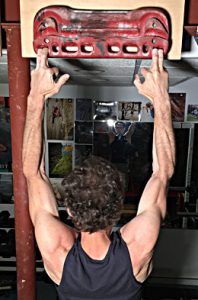Podcast: Finger Strength Hangboard Training Protocols

Nicros Nexgen Hangboard
In terms of physical attributes, increasing relative peak finger force is central to taking your climbing to the next level—think of this as the finger force you can apply to a rock hold in relation to the body mass the fingers must support. Improving this finger strength-to-weight ratio is possible by increasing the numerator (greater finger strength) and decreasing the denominator (lowering body mass).
While there are many different fingerboard training methods/protocols/programs (some good, some bad) in the public domain, this podcasts will present four evidence-based protocols that work. Experienced climbers, with no recent history of injury to the fingers/elbows/shoulders, can employ one of these maximum-grip-strength protocols on a twice-a-week basis as supplement to time spent climbing. Aggregate number of climbing and finger training days per week must not exceed four—resting the fingers a minimum of three days per week is essential for neuromuscular recovery and finger tendon remodeling. Break this rule and you’ll likely end up “broken”….in one way or another.
Podcast Rundown:
1:14 – Review of 5 reasons why stronger fingers are central to taking your climbing to the next level
4:50 – Importance of “Relative Peak Finger Force”
10:10 – 3 Hangboard training modalities
13:33 – Training protocol 1: “Minimum Edge”
19:14 – Training protocol 2: “Maximum Weight 10-second Hangs”
25:20 – Training protocol 3: “7-53 Weight Hangs”
32:00 – Training protocol 4: “7/3 Repeaters”
41:00 – How to fingerboard with good technique…to protect & strengthen your shoulders.
45:05 – Hangboard training program design – How to integrate your with your other workouts and performance climbing.
View NICROS training products, include the Nexgen, V10, and Warrior hangboards!
Music: Misty Murphy
Download all the monthly training podcasts for free by subscribing to the “Eric Horst’s Training for Climbing” podcast on iTunes. Please leave a review on iTunes!
Copyright © 2017 Eric J. Hörst | All Rights Reserved.

